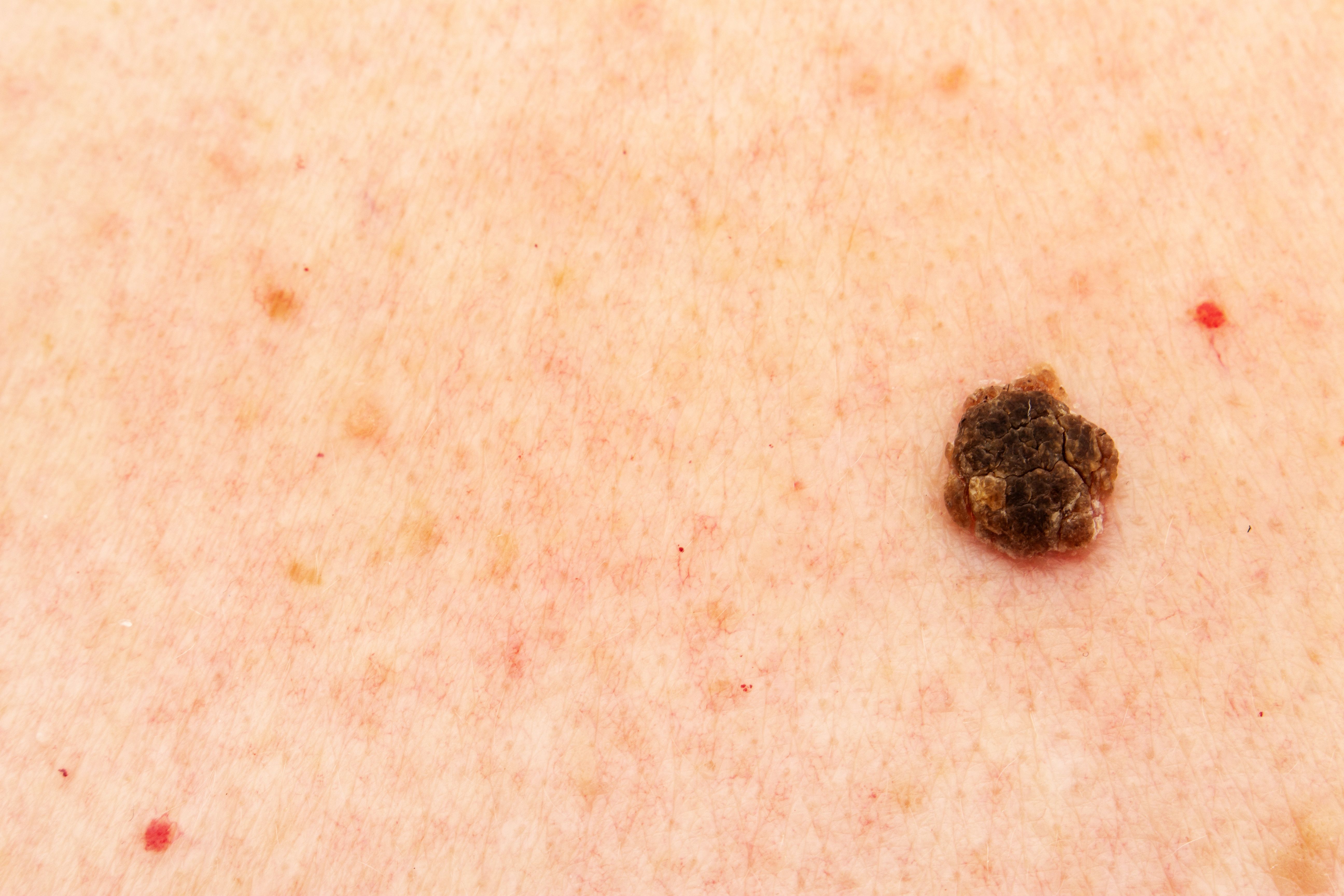- Acne
- Actinic Keratosis
- Aesthetics
- Alopecia
- Atopic Dermatitis
- Buy-and-Bill
- COVID-19
- Case-Based Roundtable
- Chronic Hand Eczema
- Chronic Spontaneous Urticaria
- Drug Watch
- Eczema
- General Dermatology
- Hidradenitis Suppurativa
- Melasma
- NP and PA
- Pediatric Dermatology
- Pigmentary Disorders
- Practice Management
- Precision Medicine and Biologics
- Prurigo Nodularis
- Psoriasis
- Psoriatic Arthritis
- Rare Disease
- Rosacea
- Skin Cancer
- Vitiligo
- Wound Care
News
Article
Compared to Cryotherapy, Plasma Exeresis Yields Greater Lesion Clearance in Seborrheic Keratosis
Author(s):
While both cryotherapy and plasma exeresis are effective in clearing seborrheic keratosis lesions, researchers observed more statistically significant clearance in patients treated with plasma exeresis.
When comparing cryotherapy and plasma exeresis therapies in patients with seborrheic keratosis, researchers found that despite both displaying efficacy in clearing skin lesions, plasma exeresis did so with greater statistical significance.
Milan Lipowski/AdobeStock

In a study1 published by Skin Research and Technology, researchers Noorbakhsh et al documented the process of comparing the 2 therapeutic options via a randomized controlled trial of patients with the benign skin tumor. They referenced plasma exeresis’ emergence as a new technique in treating the condition as a basis for their comparison.
Between 2021 and 2022, researchers recruited 35 adult, male patients in the trial. All participants were required to have a minimum of 4 seborrheic keratosis lesions sized between 5 mm and 15 mm with a thickness of 2 mm to 3 mm; all patients participating in the study had a minimum of 2 lesions on either side of their body.
Exclusion criteria involved lesion location and characteristics. Lesions located on or around the eyelids and eyes or in intertriginous regions, as well as hair-covered or pedunculated lesions, were grounds from exclusion from the study.
Prior to receiving treatment, 2 blinded dermatologists evaluated participant photographs using the physical assessment scale (PAS), with a score of 3 representing a remaining lesion measuring greater than 1 mm in thickness and a score of 0 indicative of complete seborrheic keratosis clearance. Scores of 1, 2, and 3 were considered noncleared, and a score of 0 was considered cleared.
Each patient received both cryotherapy and plasma exeresis treatment, with 1 side of their body randomly assigned to receive cryotherapy while the other side underwent plasma exeresis. In the side treated with cryotherapy, researchers dipped a cotton swab into liquid nitrogen, with a peripheral rim of 1 mm and 2 freeze cycles lasting 15 seconds each before applying the swab to the affected skin lesions. On the side treated with plasma exeresis, researchers utilized a plasma device with a frequency of 62.5 Hz and peak-to-peak voltage measuring 3.44 kV.
Researchers then monitored patients for 20 minutes post-procedure to identify any potential adverse skin reactions.
At 3 and 6 weeks post-treatment, participants returned for a follow-up evaluation, wherein the 2 blinded dermatologists again assessed patients using PAS scoring. Patients were asked about side effects such as site-specific pruritus or burning, while researchers also evaluated for atrophy, crusting, erythema, and more. Adverse effects (AE) were scored on a 0 to 3- point scale, with 0 indicating an absence of AE and 3 representing the presence of severe AE.
By week 3, 37.1% of lesions treated with plasma exeresis had achieved complete clearance,while 17.1% of lesions treated with cryotherapy achieved the same level of clearance. By week 6, both treatments led to improved lesion clearance (complete clearance with plasma exeresis n=57.1%; cryotherapy n=20.7%), though researchers noted statistically significant improvement and clearance in lesions treated with plasma exeresis.
Additionally, between the 3 and 6- week follow-up visits, both treatments led to a reduction in PAS; however, plasma exeresis again led to greater levels of improvement than cryotherapy. At week 3, the average PAS for lesions treated with plasma exeresis was 0.91 ± 0.89, versus an average score of 1.4 ± 0.84 in lesions treated with cryotherapy. By week 6, the average PAS among lesions treated with plasma exeresis had reduced to 0.5 ± 0.6, while the average PAS in lesions treated with cryotherapy reduced to 1.1 ± 0.72.
While more complications were reported in lesions treated with plasma (n=19) than in those treated with cryotherapy (n=13), this difference was not significant, researchers noted.
Study limitations included a limited sample size and small number of follow-ups with minimal spacing between each.
“We observed promising results following the use of plasma exeresis in treating SKs (seborrheic keratoses). The treatment was generally well tolerated, except for having erythema as the most common adverse event,” according to Noorbakhsh et al. “We found that both cryotherapy and plasma exeresis are effective treatment options for SK. However, we observed higher number of cleared lesions treated with plasma exeresis in 6 weeks and after two treatment sessions. The most common complications observed in the plasma and cryotherapy groups were erythema and hypopigmentation, respectively. No serious adverse event was observed. Based on the results of our study, we believe that plasma exeresis can be a good treatment option with promising results for treating SKs with acceptable side effects.”
Reference
- Noorbakhsh M, Kalantari Y, Ghasemi E, et al. Comparing the efficacy of plasma exeresis and cryotherapy for the treatment of seborrheic keratosis: a randomized controlled trial. Skin Res Technol. 2023;29(8). doi:10.1111/srt.13429
Newsletter
Like what you’re reading? Subscribe to Dermatology Times for weekly updates on therapies, innovations, and real-world practice tips.











